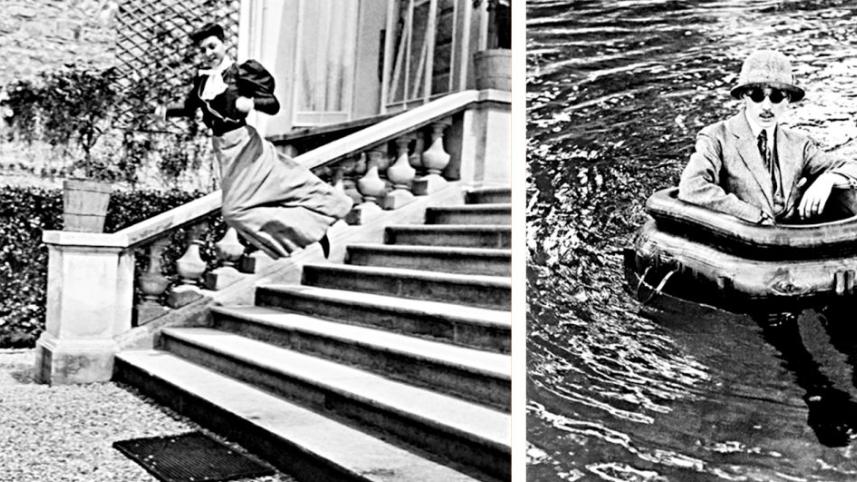Lartigue's Photographs

Different people take up photography for different reasons but they have one thing in common: they love making pictures. Few in the annals of photography have manifested this love more than the French photographer Jacques-Henri Lartigue (1894-1986).
Lartigue made his first photos at the age of six with his father, himself an avid photographer. When he was eight he got his own camera and started down the road of photography. At a time when large, tripod-mounted cameras reigned supreme, Lartigue worked with small, hand-held cameras.
Lartigue used his camera continuously to record everything he liked about his world, capturing the antics of family, friends and staff. The Lartigue family was large and affluent. Its members played in the beach, walked dogs, raced automobiles, flew planes and kites and engaged in other, often silly, entertainment. Lartigue was always there, taking photographs to capture moments that revealed not just characters or stories but an entire epoch. He infused his photographs with a child's innocence and sense of wonder.
What factors contributed to Lartigue's vivacious photographs? He was born with a talent for composing a photograph within the frame. To this he added wide-eyed astonishment and joy at life around him. He understood technology and though these cameras were primitive compared to today's products, he pushed them to their limit. Planning to photograph an automobile race, he decided to photograph the speeding cars head-on. "I am going to use 300/second because of the car's speed," he wrote in his journal. However, for a photograph of his nanny with a suspended overhead balloon, because the shutter speeds were too slow to catch the balloon in motion, he timed his photograph while the balloon was at the very top changing direction.
Eventually he moved on from photographing outdoor activities to photographing glamour and fashion. In 1974 he became the official portrait photographer of French President Giscard d'Estaing. A pioneer of colour photography, he was using the autochrome colour process in the 1920s to make colour photographs. He was also a prolific painter and counted Picasso among his friends.
Lartigue's work remained unknown until it was "discovered" in 1963 (he was 69 then). An exhibition at the Museum of Modern Arts in New York followed and he quickly found his place among other eminent photographers. For his next projects, he chose to work in fashion photography.
In the end, Lartigue's childhood photographs anticipated the best of small-camera work to come a generation later: the likes of Henri Cartier-Bresson, Andre Kertesz and others. It was the happy combination of three things: his unique talent to see, his presence in the world when photography was coming of age, and the position in life that he inherited along with the access it assured him – that made his work magical.
I find Lartigue's photographs to be cheerful, humorous and ultimately invigorating. While serious and depressing photographs have their need and place in our world, it is to the works of the child genius Lartigue that I turn to when I need to lift my spirits.
www.facebook.com/tangents.ikabir



 For all latest news, follow The Daily Star's Google News channel.
For all latest news, follow The Daily Star's Google News channel.
Comments